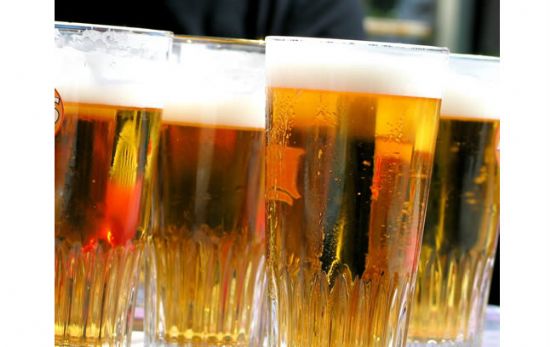Beer packaging containers come in many forms. Glass bottles are the most commonly used, while aluminum listeners are mostly used for cheap beer varieties; beer barrels come in several different sizes, mostly used in restaurants, bars, or other parties.

Bottles: Most bottled beer has a capacity of 12oz, but some packs have 16 or 22oz. Some bottled beer is capped, while most beer is revolving. Standard glass bottles should be brown, but they are also green and transparent. The glass bottle is a very good container. It does not add any odor and taste to the beer that will affect beer quality. Many breweries produce special bottles and advertise their own trademarks. If you have ever visited a modern brewery, you will be impressed by the assembly line in the bottling plant. These breweries require large investments, and "little things" such as the shortage of glass bottles or bottle caps can cause great losses.
Kegs: More than 30 years ago, the shape of beer barrels was inconsistent and most of them were made of hardwood. The beer barrel is stretched with a metal strip and the gap between the wooden strips is sealed with resin. Beer barrels require the use of special pressure devices to fill or guide the beer. Although the beer itself contains part of the air pressure, it is not enough to guide the beer out of the barrel. Of course, if you have a manual air pump, you don't need to use carbon dioxide cylinders. Carbon dioxide is usually required for beer bottling and it is naturally produced during the fermentation process. Carbon dioxide is a neutral gas and it does not change any taste of beer. Usually a can of carbon dioxide gas can be used to pressure more than a dozen barrels of beer. Bottled beer should be placed where there is no direct sunlight. Since most bottles are brown or green, the color in the glass can block some of the light waves to prevent beer variation. Whether it is bottled beer or canned beer, they should all be stored at room temperature, after drinking in the ice (8 - 14 degrees). Most bottled beer should be stored at low temperatures because most of the beer is not pasteurized.
Filling is the last step in beer production and has a direct impact on the quality of the beer and the appearance of the beer. The beer after filling should meet the hygiene standards, minimize CO2 loss and reduce the air content enclosed in the container.
Canned: Canned beer began in the United States in 1935. In the Second World War, it developed rapidly due to military demand. After the war, after a series of technological transformations, the demand gradually increased. In 1966, the bottled and canned ratio in the United States was 52:46. Tank material is aluminum or copper. Canned beer is light in weight, easy to carry and open for drinking, and is therefore very popular among consumers and has developed rapidly.
Beer PET (polyethylene terephthalate) plastic bottles: put on the market since 1980, the number increases year by year. Its advantages are high transparency, light weight, re-seal after unsealing, and reasonable price. The main disadvantage is poor gas retention, and CO2 is gradually reduced during storage. Adding a coating can improve air retention, but storage time should not be too long. PET bottles cannot be evacuated or pasteurized beforehand, and special filling procedures are required to avoid ingesting air and contaminating bacteria.